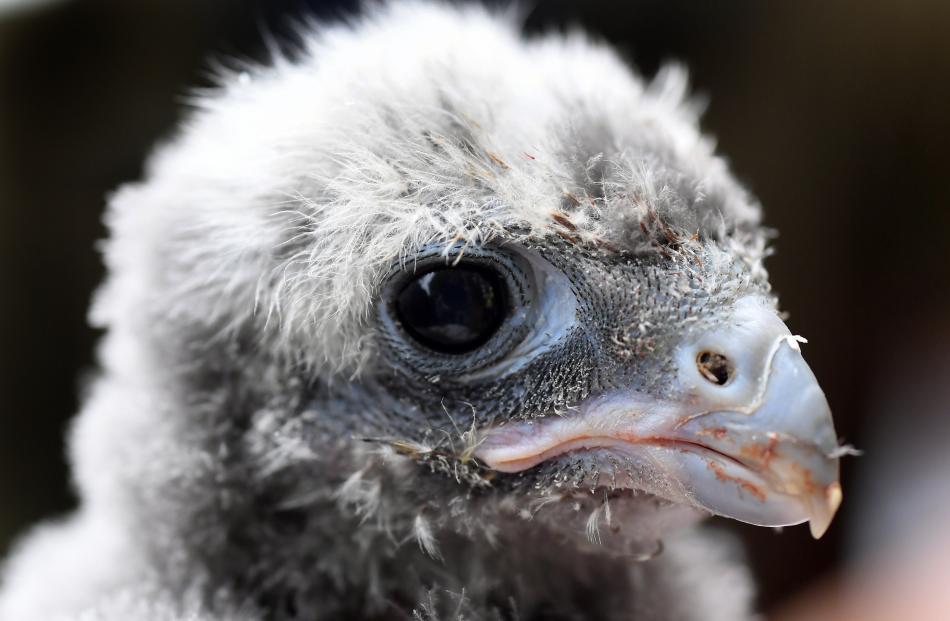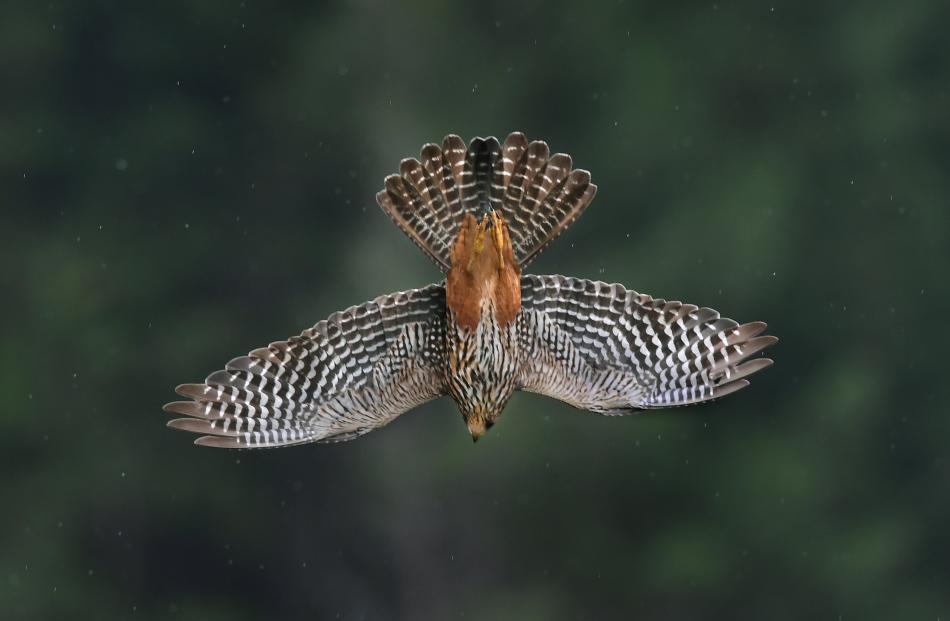While most people would run in fear from a dive-bombing falcon, sharp of beak and claw and intent on attack, researcher Chifuyu Horikoshi stands smiling in the face of nature’s fury.
Armed with just a strange red sunhat with loops of fishing line, but packing years of experience researching New Zealand falcons, Ms Horikoshi stood gamely in a Berwick forestry area as two falcons wheeled, screamed and dived at her head.
After a few minutes, the more aggressive female fell into her trap, becoming entangled in the hat’s loops and finding itself caught ready for weighing, measuring and banding.
Ms Horikoshi has begun researching the nationally vulnerable birds, the estimated number of which is lower than that of the kiwi, in Dunedin pine forests.
She said falcon conservation was often overlooked in favour of other birds, and it was important efforts were made to save them.
Wenita technical manager James McEwan said the research was being funded by Wenita Forest Products, City Forests and the Otago Regional Council to find a way for forestry and falcons to "live in some sort of harmony".
Mr McEwan said the research stemmed in part from the company having Forest Stewardship Council accreditation.
The council is a German-based international non-profit organisation established to promote responsible management of the world’s forests.
Being accredited required observing protocols around rare, threatened and endangered species.Mr McEwan said accreditation allowed "better opportunities in the market for your timber".
At the Berwick forest on Thursday, Ms Horikoshi trapped and banded an adult female — the gender she said was more aggressive in the falcon world — as it defended its nest.
Despite the attention of the adult male, she also managed to weigh, band and measure a single male chick that was 10 to 14 days old.
The PhD student said she was doing the work for Parker Conservation, and had a background researching New Zealand falcons in Kaingaroa forest, in the North Island, as part of her PhD research at Massey University.
The three-year study in Dunedin was in its first year.
"Firstly, we just need to know how many falcons there are around here.
"If I can tag them, putting leg bands on as many as possible, we can track where the falcons go and where they will nest in the following years."
Because the study was funded by forestry companies, she was searching in pine plantations in areas including north of Silver Peaks, Mt Allan, Flagstaff, near Taieri Mouth, Toko Mouth and Waipori.
Of her trapping style, she said when the birds were more aggressive they were easier to trap, as they attacked her head and got caught in the loops.
The hat was attached to her body so the falcons could not escape after being caught.
While the method looks dangerous, she said it was not, and she had got used to being dive-bombed.
"At the beginning, of course, I was a little bit frightened, but as I got hit many times I realised they won’t kill me."
If the birds would not dive-bomb, she put a "lure bird" like a sparrow in a cage, and trapped the falcon in a noose on top of the cage.
In native forests the birds laid eggs on top of epiphytes, plants that grew on top of tree branches, and were flat on top.
In areas where there were no natives, like pine plantations, the falcons found a spot on the ground in logged areas, under tree debris, branches or logs.
"Falcons are quite adaptable in different environments.
"Wherever they find food they stay there."
The pine forests had become an important "surrogate habitat" for the birds.
She had discovered 12 nests since beginning the research in December, banding birds as she went.
Mr McEwan said Ms Horikoshi had been "excellent" and was "probably the most experienced falcon person in the country".
Next year the study would involve finding whether the birds tagged had stayed in the same areas, where the chicks had gone and "where the population the companies previously knew little about" had gone.
The research may extend to attaching transmitters to the birds to track their movements.
There were already protocols when nests were found by crews working in an area.
"It’s about refining those protocols and knowing what we can do around the birds and how we can best survive together."















